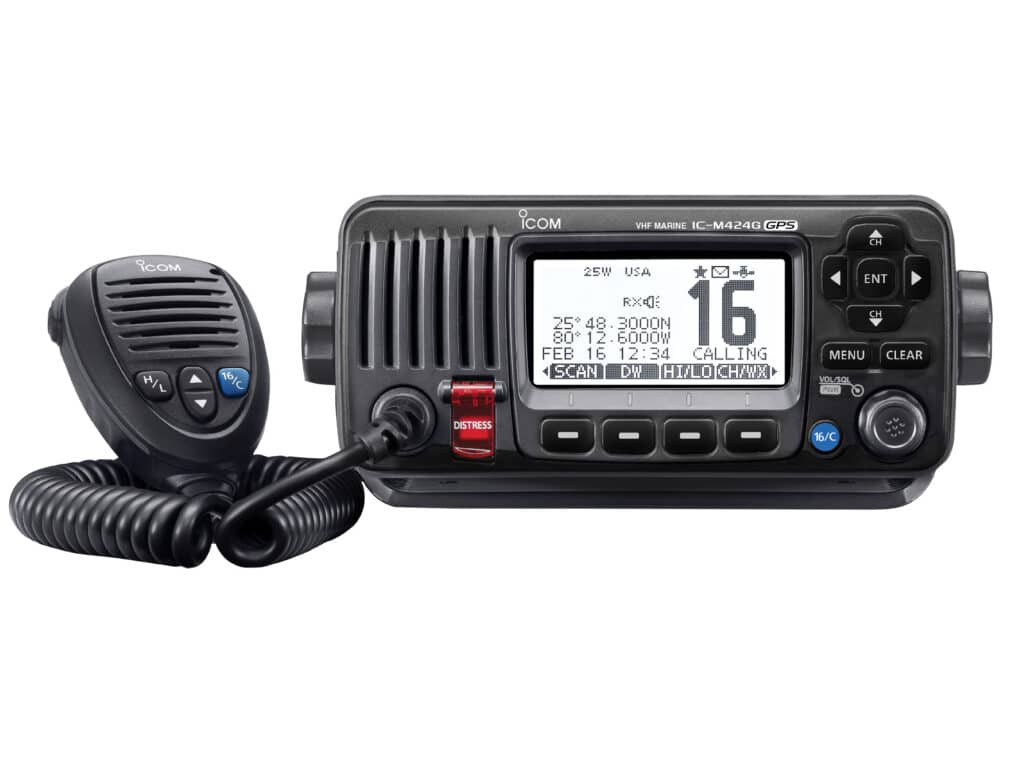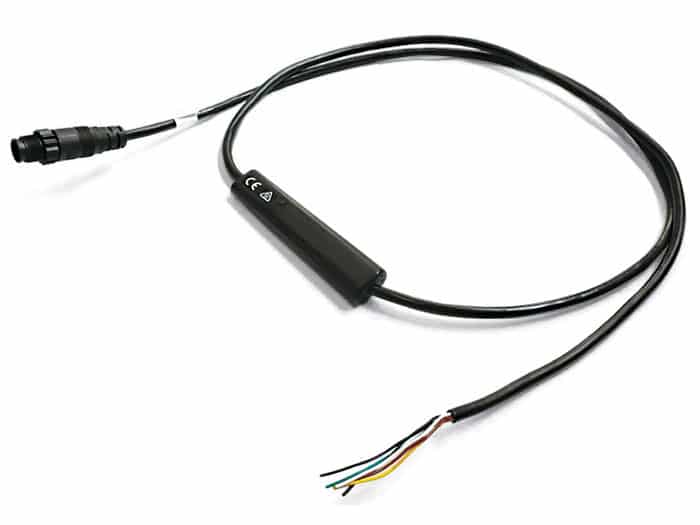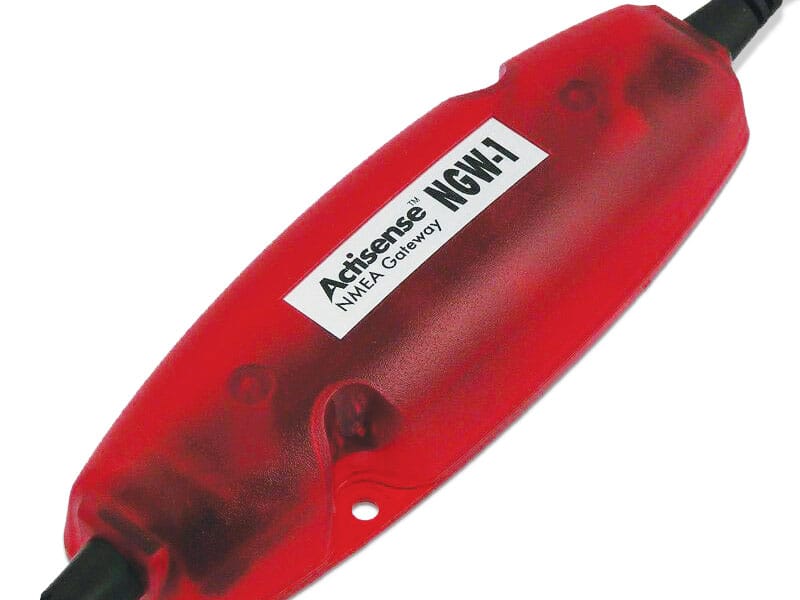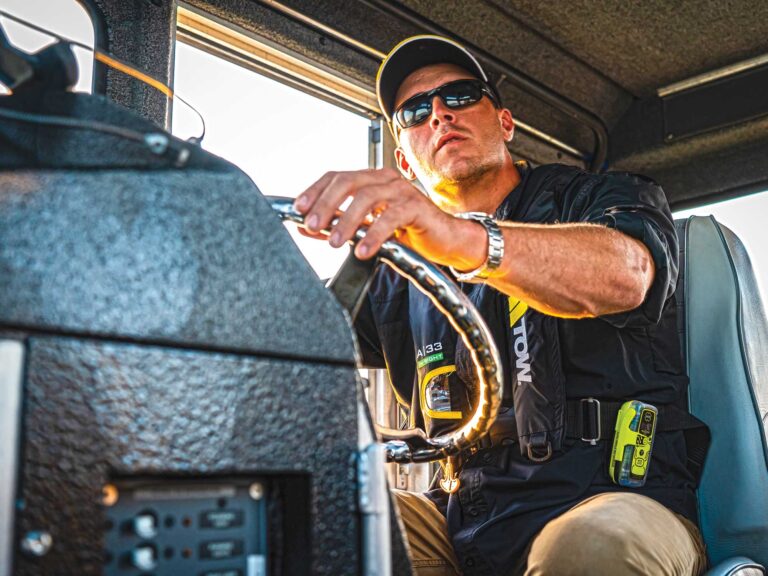
Today a fair number of marine electronics still use the old National Marine Electronics Association 0183 networking protocol, which includes some AIS and autopilots. But the most notable are fixed-mount VHF radios. Many older (and some new) VHFs have only NMEA 0183 wires (usually four extra wires) to connect to a device with built-in GPS, such as a multifunction display. Today’s VHFs need a GPS signal for the Coast Guard-required digital selective calling (DSC) maritime distress and safety call system to function properly.
Most MFDs rely on NMEA 2000 (N2K for short) to share digital data. So, how can you network a VHF with an MFD? Here are some solutions.
Auxiliary Power-Plug Wires
Some MFDs, such as Lowrance HDS Pro multifunction displays, have a main power harness that includes auxiliary NMEA 0183 wires. This is in addition to the N2K networking via a separate port. You can use the wires from the power harness to connect with the NMEA 0183 wires from the VHF radio. This requires crimp or solder splices, or a small terminal block with a waterproof housing.
While the solution might sound simple, it can grow confusing. Unfortunately, I have found that not all marine electronics feature the same color codes for NMEA 0183 wires. As a result, it can require some trial and error and a call or two to tech support for the brands you are trying to network before finally figuring out which wires connect to which.

Converter Cables
Some new MFDs, such as the Simrad NSX, now use only N2K with no built-in auxiliary provisions for NMEA 0183 networking. Simrad does offer an elegantly simple solution in the form of an optional NMEA 0183-NMEA 2000 converter, with a serial cable to convert micro-C to bare wire ($199; fish307.com). This kit includes a 6-foot cable with an inline NMEA converter, an N2K plug on one end, and 0183 wires on the other to connect to the radio. It also includes T-connectors to plug into the onboard N2K backbone to access a GPS signal.
As with the solution above, it might take some time to figure out the proper NMEA 0183 wire connections in order for the two units to communicate.

Gateway Device
Companies such as Actisense offer gateway devices that allow networking between NMEA 0183 and N2K devices. For instance, the compact Actisense NGW-1-ISO bidirect-ional NMEA 2000 conversion gateway ($210.22; hodgesmarine.com) provides a simple way to link between a boat’s data network, converting NMEA 0183 to N2K and vice versa. The translucent converter has cables emanating from both ends, one with an N2K plug and the other with four NMEA 0183 wires, plus a shield wire. It offers the capabilities to connect not just one but numerous NMEA 0183 devices to the boat’s N2K network.
Buy a New VHF
There is yet another solution. Buy a new fixed-mount VHF radio that’s N2K-compatible or has built-in GPS. Standard Horizon’s G2400 VHF, for example, is N2K-compatible. There’s also Icom’s M424G VHF with built-in GPS that makes networking a moot point. DSC functions are seamlessly enabled.
No matter which of these solutions you choose, effectively feeding GPS data to your VHF radio is critical to the safety of you and your crew in emergency situations. To learn more about the importance of your VHF’s DSC emergency alert function, visit boatingmag.com/using-dsc-to-send-an-electronic-mayday.









